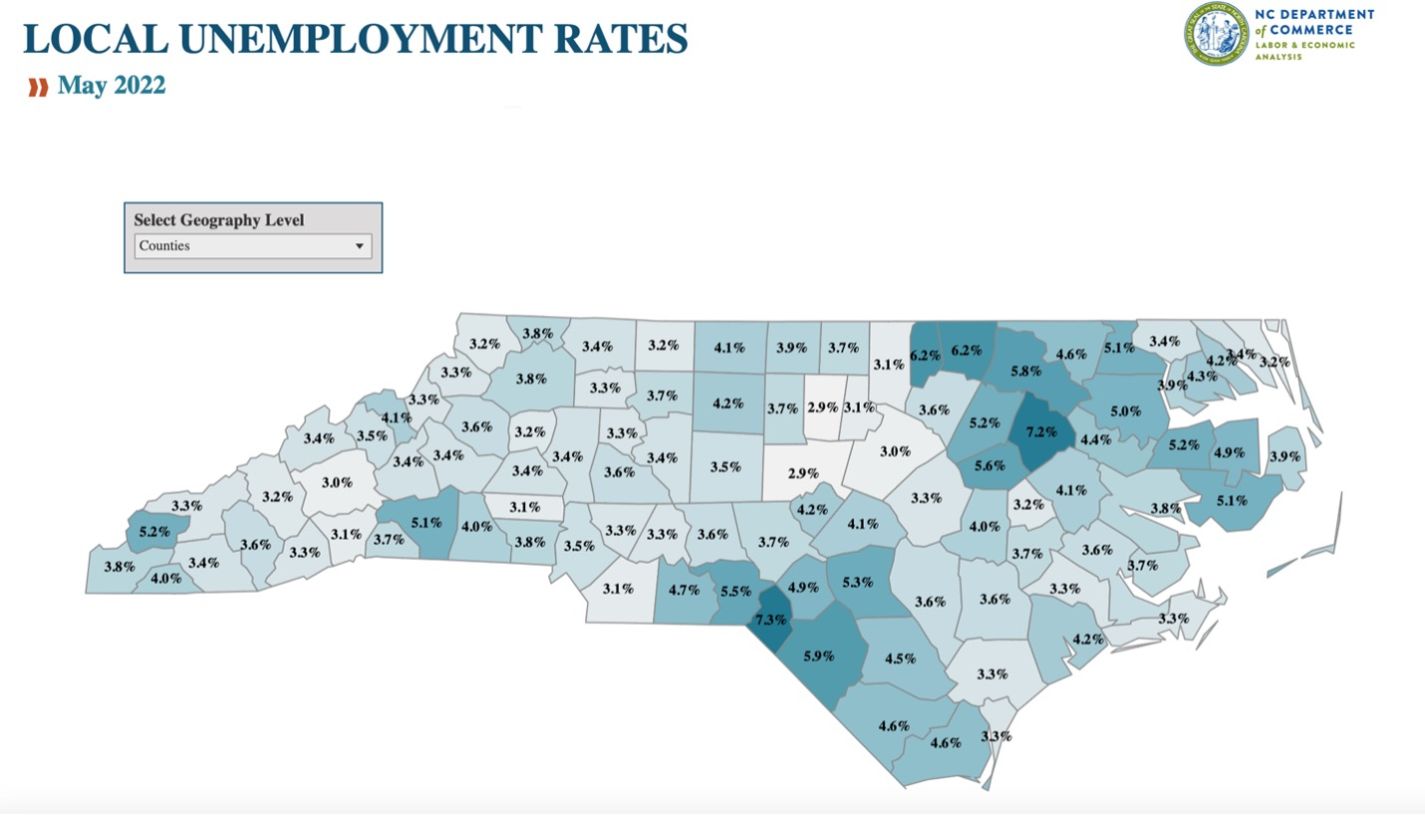North Carolina unemployment rates up in all fifteen metropolitan areas
Published July 7, 2022
Eighty-nine of North Carolina’s one hundred counties experienced an increase in unemployment last month, according to the latest release from the North Carolina Department of Commerce. Only six counties saw a decrease in unemployment last month, while five experienced no change.
Fifteen counties now have unemployment rates above 5%, two counties more than last month.
“Scotland County had the highest unemployment rate at 7.3 percent while Chatham and Orange Counties each had the lowest at 2.9 percent,” according to the release.
After months of decreases, each of the state’s fifteen metropolitan statistical areas saw an increase in unemployment last month. Jacksonville and Greenville saw the highest increase at 0.4%.
Micropolitan areas, defined by the Census Bureau as a “core area containing a substantial population nucleus,” did worse last month too, with all areas seeing an increase in unemployment except Kill Devil Hills and Rockingham. Laurinburg and Wilson saw no changes.

Over the last year, however, unemployment rates have decreased in all 100 counties as the state’s average has dropped markedly and as the pandemic recovery continued.
The county unemployment numbers are not seasonally adjusted. The press release from Department of Commerce advises, “It is important to note that employment estimates are subject to large seasonal patterns; therefore, it is advisable to focus on over-the-year changes in the not seasonally adjusted estimates.”
Looking at recent May trends to see if this reveals any patterns finds that in May 2016 and May 2018 unemployment decreased in most counties compared to the previous month. In May 2017 and May 2019, unemployment rates rose in most counties. Given that the state has been in recovery mode, however, the change of direction in local unemployment rates may be more significant. We will continue to monitor employment trends at the local level for a more informed analysis.
Unemployment may be just one barometer of state economic health, but it is perhaps the most important. Having steady employment can enable financial stability for households, reducing uncertainty and the multiple stresses that accompany it.







